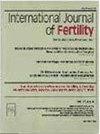The overactive bladder and quality of life.
International Journal of Fertility and Womens Medicine
Pub Date : 2005-01-01
引用次数: 0
Abstract
Overactive bladder (OAB) affects 16.6% of the U.S. population, or 33 million adults, in some form. Despite the prevalence of OAB, almost 60% of those affected seek no medical assistance for the condition either because of embarrassment or the misconception that it represents an inevitable function of aging. A recent surge of interest on the subject has uncovered the dramatic effect that OAB can have on social interactions, sleep, depression, sexual health, and overall health-related quality of life (HRQoL). The introduction of validated, condition-specific QOL questionnaires has enhanced our ability to measure these subjective dimensions of OAB, and to assess their response to therapeutic interventions.
膀胱过度活动与生活质量。
膀胱过动症(OAB)以某种形式影响着16.6%的美国人口,即3300万成年人。尽管OAB普遍存在,但由于尴尬或误解它是衰老不可避免的功能,几乎60%的受影响者没有寻求医疗援助。最近对这一主题的兴趣激增,揭示了OAB对社会交往、睡眠、抑郁、性健康和整体健康相关生活质量(HRQoL)的巨大影响。引入经过验证的、特定条件的生活质量问卷,增强了我们测量OAB这些主观维度的能力,并评估他们对治疗干预的反应。
本文章由计算机程序翻译,如有差异,请以英文原文为准。
求助全文
约1分钟内获得全文
求助全文

 求助内容:
求助内容: 应助结果提醒方式:
应助结果提醒方式:


